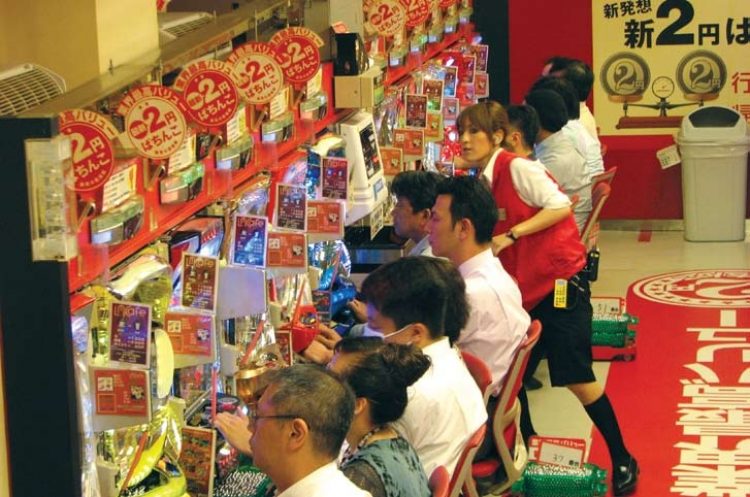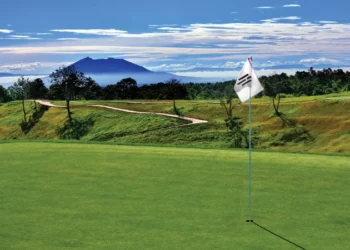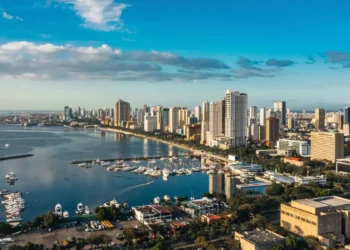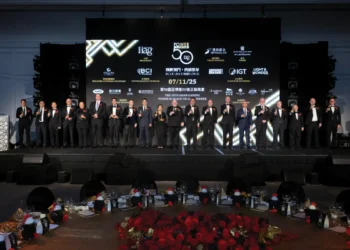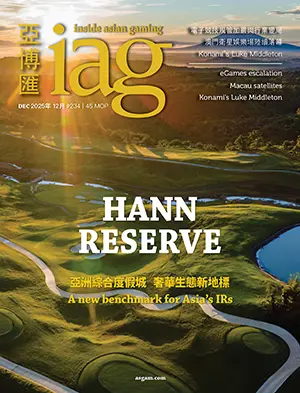The case for casinos after Japan’s disaster
Shouldn’t Japan’s triple blow of natural disaster, nuclear accident and associated economic fallout boost rather than diminish the case for casinos in that country? Provided they’re built robustly and kept away from the coast and power stations, the rationale in favour of casino gaming has if anything been bolstered by the country’s current misfortunes.
It’s possible that the appetite of foreign operators and foreign banks to bankroll any such venture has been diminished by recent events. But the notion that the Japanese would ever have accepted the idea of majority foreign ownership of a casino project or projects was arguably at best wishful thinking by foreigners.
There’s certainly, however, a precedent for countries looking for a quick stimulus to the economy or undergoing major economic shock to look to casino operators as partners to engineer a partial fix. Singapore is an example of the first scenario, and Ireland an example of the second one.
Singapore’s ‘issue’ was a flagging tourism sector blamed on fresh regional competition from the likes of Hong Kong for the lucrative airline stopover visitor segment. Barclays Capital said in comments to the news agency Agence France Presse recently that the two integrated gaming resorts that opened in Singapore last year are contributing an estimated 0.3% to 0.4% annually to the city-state’s GDP. Barclays added this could rise to 0.7% “in the near future”.
Ireland’s problem was a budget deficit linked to lax credit policies in the country’s banking sector. That budget hole could peak at 125% of GDP according to an analysis in The Economist this month. Ireland’s Department of Justice recently said it had received a proposal for a US$427 million ‘super casino’ on the banks of the river Liffey in the country’s capital, Dublin.
Even before Japan’s recent calamity, the country’s ageing and shrinking population had created an argument for the introduction of casino gaming, given its potential for contribution to GDP growth. But so many announcements about timetables for legislation and the ‘imminent’ arrival of casinos have been made by those advising the country’s lawmakers, that the investment community has understandably become rather sceptical about progress on the issue.
Professor Ichiro Tanioka of the Institute of Amusement Industry Studies at Osaka University of Commerce has been a longtime observer of this process.
“The incident [earthquake and aftermath] will delay the [casino liberalisation] schedule,” says Prof. Tanioka.
“Another aspect has occurred since the earthquake. This is whether we should enhance casino legalisation for the sake of the damaged area. This argument is not openly discussed at the moment though.”
The fact Japan is in a highly active earthquake zone does not disbar future large scale infrastructure investment of the kind associated with modern casino resorts. Thanks to Japan’s robust building inspection and construction regime, most major structures survived even the recent 9.0 magnitude quake. The tsunami that accompanied the earthquake does, though, create a strong argument for building any such casino resorts well inland.
As far back as the mid-2000s, the Japanese media were reporting that 22 of the country’s 47 prefectures were in favour of regulated casino gaming. Tokyo’s Governor Shintaro Ishihara has been a major proponent of the idea.
The real elephant-sized sumo wrestler in the room regarding the prospects for casinos in Japan is not natural disasters. It’s not even the political instability that has seen four changes of prime minister since Junichiro Koizumi stepped down from the role in September 2006.
The problem is pachinko, the Japanese pinball-like game to be found everywhere in the country.
Pachinko Mon Amour
A bizarre game with a bizarre prize system
Pachinko is a machine-delivered game using steel balls in an upright cabinet reminiscent of vintage Western penny arcade games. According to Osaka-based author Brian Ashcraft, the word pachinko has existed since the Meiji Era (1868-1912) and refers to something shot out of a catapult. Mr Ashcraft says that pachin is the onomatopoeic word in Japanese for ‘slap’ or ‘click’, and ko means ‘ball’. The first pachinko parlour, installed with wooden pachinko machines, opened in the Japanese city of Nagoya in 1930. After the Second World War, the game’s popularity boomed as pachinko players had a chance to win tobacco—a sought after luxury in post-conflict Japan.
Modern pachinko machines share some of the characteristics of contemporary slot gaming technology such as bill acceptors and ticket-in/ticket-out technology. Like ‘shoot ‘em up’ arcade games and like slot machines, pachinko machines are grouped together and marketed in shops and halls often referred to as ‘parlours’.
A key difference from most casino and arcade games is that with pachinko, players ‘buy’ real steel balls with their money, rather than buy electronic credits. The balls also have to be launched manually by the player rather than automatically in order for pachinko to qualify as a ‘leisure’ activity rather than as ‘gambling’.
Gravity, rather than random number generation and bet size, is the key ingredient of the game. A pachinko machine resembles a vertical pinball machine, but with no flippers and a large number of relatively small balls. The player fires a ball up into the machine, controlling only its initial speed. The ball then cascades down through a dense forest of pins. In many cases, the ball falls to the bottom and is lost, but if it instead goes into certain pockets, more balls are released as a jackpot.
The psychology of the game is interesting, in that unlike casino slots, by the end of a pachinko session the average player will have ‘won’ more games than he has lost, in the sense he ends up with more balls than when he started. That doesn’t automatically mean, however, that the player has an advantage over the house. That’s because while players may ‘buy’ their balls at say four yen apiece, the ‘buy back’ value of the balls when players come to exchange their catch for prizes, is always lower—typically 33% lower.
At the end of a session, players exchange their haul of balls for so-called ‘normal’ prizes such as cigarettes, confectionery, electronics and other items, or they can be exchanged for ‘special’ prizes. That exchange stage is the real key to the player appeal of pachinko. Examples of ‘special’ prizes include strange and cheap looking plastic boxes or even tacky cigarette lighters. The real value of special prizes is that they can be taken off the premises and swapped for cash. This is done at a specialist exchange shop (known as ‘kankin’)—usually around the corner from the pachinko hall. The kankin then sells the special prizes back to distributors, who then re-sell the prizes back to the pachinko halls and so the cycle continues.
Gravity Takes Hold
Pachinko play is trending up again—but revenues are on the slide
Before the recent crisis there was evidence of a modest upward trend in the number of pachinko players after four straight years of decline between 2004 and 2007 (see Table 1 below). That revival in participation has been attributed by some industry commentators to more sophisticated marketing techniques being applied to the sector. They include: smoke free rooms in pachinko parlours, double seats for couples, and machines that temporarily offer jackpots of more than US$1,000 for an investment of a few yen.
The bad news is that pachinko revenue has fallen sharply since the end of 2006 (see Table 2 below). Revenue dropped 23.2% between the end of 2006 and the end of 2009. This suggests the ‘new’ players (either people returning to the market or novices) are more likely to play the low denomination games mentioned above. Nonethless, in financial year 2009-10 (ending 31st March 2010) the sector still generated an impressive ¥21.1 trillion (US$254.7 billion) in revenue. That’s nearly 17 times as much as the gross revenue generated by casino games in Macau in the approximately equivalent calendar year 2009 (US$14.9 billion). It’s also more than twice the amount of cash Japan plans to raise for its emergency reconstruction budget (US$120 billion) due to be announced this month.
There’s also evidence of consolidation in the industry in terms of a shrinking number of parlours and falling numbers of installed machines (see Tables 3 and 4 below)—although machine installation had been showing some return to upward movement prior to the March earthquake disaster. The point about market consolidation is it could actually create operational efficiencies capable of boosting the profitability of those operators remaining in the market.
The Japan Productivity Center—an economic think tank based in Tokyo—published its most recent research on pachinko in its ‘White Paper of Leisure 2010’ in July. It said as of 31st March 2010 Japan had 17.2 million pachinko players. That was 1.4 million more than at the end of the previous financial year and equal to 16.8% of the population at that time said the Center. As of October 2010, the adult population of Japan (those aged 20 and over) was 111 million according to the Statistics Bureau at Japan’s Ministry of Internal Affairs and Communications.
The Japan Productivity Center’s chief researcher Naoya Yanagida said in a commentary to the 2010 White Paper of Leisure that the increased pachinko participation rate might not be sustainable.
“The aggressive introduction of low denomination machines equivalent to US$0.05 or US$0.01 per ball did [initially] increase the number of players but the impact of these measures seems to be over,” stated Mr Yanagida.
The Center added the average pachinko player made 20.4 trips to pachinko parlours during that year—one trip every two and a half weeks—a much higher frequency than most mainland Chinese casino players visiting Macau, who are currently limited to one trip per month under China’s Individual Visit visa scheme.
Fighting the Law or Framing it?
Pachinko’s unusual regulatory status has tacit support from powerful groups
Japanese law essentially prohibits gambling organised by private entities. However, pachinko is defined as a “speculative pastime” in government guidelines. As a result, it’s classified as part of the leisure industry and supervised as such by the National Police Agency.
In 2005, the English-language daily newspaper The Japan Times carried an article by Ronald Morse, professor of international economics and business administration at the University of Nevada at Las Vegas on the strange legal status of pachinko.
Prof. Morse stated: “Self-deception on issues like this is a national sport in Japan. The administrative fiction that pachinko is not gambling in Japan is based in the Japanese government and its antiquated regulatory structure. This is what Japanese refer to as gyousei shido (administrative guidance).”
Pachinko guidelines are listed in an addendum to the legislation that covers prostitution—known as the Adult Entertainment Business Law. Pachinko customers must be over 18 years of age. Under the rules, pachinko halls and operators are technically prohibited from giving cash or securities as a prize, from repurchasing prizes given to players, and from allowing players to take balls off the premises. The way pachinko prize redemption works in practice clearly breaches the spirit if not the actual technical terms of the first and second of these rules.
“The main reason some politicians speak in favour of pachinko is because it is the biggest (in the sense of money spent) pastime for Japanese,” says Prof. Tanioka of Osaka University of Commerce.
“Some politicians feel a duty to legalise pachinko as Class III gaming [i.e. to follow the US system—with Class III in this case being anything that is neither casino slot machine nor video lottery terminal].
“Another unofficial reason,” adds Prof Tanioka, “is that they [politicians] get money [from the pachinko industry] to lobby, of course.”
Japan has a long and rich history of post war political funding scandals across many industries. One possible reason is that holding political office in Japan is an extraordinarily expensive business, with MPs routinely expected to attend constituents’ weddings and funerals, making cash donations to the families on each occasion.
Pachinko Versus Casinos
Which model makes most economic (if not cultural) sense?
1. Taxation
Pachinko operators do pay tax on the gross—but not in the way most international casino operators would understand the concept. The most bizarre aspect of the pachinko hall business model is probably the revenue share done with the police meant to supervise them.
The parlours do this by operating the forex-style arbitrage system mentioned earlier. They sell the balls to players at a higher price than they buy them back—with some of the difference going to the police, according to sources in Japan spoken to by Inside Asian Gaming. It seems the investment doesn’t always pay dividends either in terms of police protection of the industry or in terms of intimidating criminals. In October last year, an armed robber stole ¥37 million (US$447,000 at current rates) from a pachinko prize exchange booth in Saitama.
Some pachinko operators have periodically been pursued by the authorities for non-payment or underpayment of corporation tax—with mixed results. Some operators are very transparent in their business practices, even investing in carded play technology that allows player credits and/or points to be recorded and stored on card at the end of a session (in the way that player points are saved on casino player cards). There are reports that a police social association in Japan has invested heavily in this pachinko player-card technology, creating something of a conflict of interest to put it mildly, given that the police are supposed to supervise the industry.
In regulated casino gaming, the most common taxation model is the most transparent. The tax jurisdiction or licensing authority takes a percentage off the top from the gross wagered. Modern casino gaming technology and increasing global standardisation of technical and accounting protocols makes that gross easy to track (for the most part). That helps to guarantee the public purse gets its defined share and reduces the risk of revenue leakage to organised criminals or for the purposes of funding other corruption.
2. General contribution to tourism and GDP
Legalisation of casino gaming can arguably be seen in its own right as both a leap of imagination and a calculated risk. What is not disputed is those jurisdictions that take the momentous decision to liberalise experience consequences that are foreseen and others that are not foreseen. Examples in Macau are that everyone correctly anticipated a surge in mainland Chinese visitors following the announcement of market liberalisation in 2002. It coincided with a wealthier China taking a more outward and assertive stance in the world after decades of relative isolation. Not foreseen by many commentators was that nine years later VIP gaming would still command such a large share of the Macau casino market.
Despite Japan’s (relatively) liberal economic and political system, and its seven-year occupation by the US after the Second World War, it has successfully managed to keep the world at arm’s length in cultural terms. It’s notoriously difficult for non-Japanese to get permanent residency in the country and acquiring citizenship is even harder. This can be seen as a unifying factor in a turbulent world because it keeps the country ethnically and culturally homogenous. But that (and the cost of goods and services in Japan) has so far been proven to be a barrier to tourists—even those from culturally similar countries such as South Korea. Japan received 8.6 million tourists in 2010—a modest 3.1% increase year-on-year according to data from Japan’s Ministry of Justice and from Japan National Tourist Organization. Macau received 25 million visitors last year—three times as many.
But people and places can change. Few thought strait-laced Singapore would ever legalise casinos, but it did, and is probably glad of it. In 2010—the year two casino resorts opened there in February and April—the city-state achieved 11 consecutive months of record year-on-year growth in foreign visitors. Singapore also managed a 47% year-on-year growth in tourism receipts between January and September that year, according to the Singapore Tourism Board. While some of this growth may be coincidental with the general recovery from the global downturn experienced in the final quarter of 2008 and the whole of 2009, the consistency of the gains looks to be related to casino gaming.
Even during a global financial crisis, Macau managed real terms GDP growth most developed economies would be happy with in an average year—2.8% and 1.5% in 2008 and 2009, respectively. Even though Macau doesn’t make very much or ‘export’ many services other than casino gaming, it seems that vice (specifically the regulated, taxed sort) pays.
Japan’s nuclear power station crisis plus the huge clean up and reconstruction operation on the northeast coast of the main island, Honshu, is likely to mean no growth for inward tourism to Japan this year—and possibly a net fall in visitors. Pachinko isn’t likely to assist in the process of rebuilding overseas tourism. It has never been marketed as a global game. It does, however, provide up to 300,000 jobs in parlours and equipment manufacturing, according to the Japan Productivity Center. But that figure is likely to fall in line with declining revenues and consolidation within the industry. At any rate, pachinko—as a mature industry dating back nearly 70 years to the post-war era—seems unlikely to be able to provide the kind of inward investment and economic stimulus the country will badly need in the next few years.
3. Professionalisation and corporatisation of gambling business funding
Pachinko’s semi-legal status means Japanese banks have traditionally been reluctant to lend to the industry. Deutsche Bank did raise ¥70 billion (US$860.4 million at current exchange rates) for Gaia—one of the largest and most transparently operated pachinko chains in Japan—back in 2005. But the financial crisis of 2008 made the banking sector adjust its risk exposure, effectively closing down global funding sources for ‘grey’ sectors such as pachinko.
Competition from other leisure industries and technologies is, though, continuing to drive demand for reinvestment capital in the pachinko operation business. In most regulated casino jurisdictions, after initial project payback the economic power essentially rests with the taxman and the casino operator. With pachinko, the operator is often beholden to the equipment manufacturer and funded by the equipment wholesalers and technical support companies, according to Knowledge Counselling for Solution, (KCS), a Japanese business consultancy based in Tokyo.
KCS says even those pachinko operators running significant profits and keeping transparent accounts are considered by the authorities to be running businesses “injurious to public morals,” and for that reason they are not allowed to raise money via IPOs within Japan.
Pachinko operators and their vendors therefore have little access to capital markets. The only other sources of cash and credit are small amounts of bank debt, non-bank sources, and tegata (Japanese equivalents of promissory notes).
The tegata is a promise by the issuing company, the pachinko operator, that it will pay the note recipient (usually an equipment supplier) the amount covered by the note generally within 60 to 180 days. Because of the relatively long repayment cycle compared to promissory notes in other industries in other developed economies, the tegata are often redeemed by suppliers ahead of the payment period (at discount) at a local bank. The redeemability of the note and the size of the discount applied by the bank depend on the issuer’s size, profitability and reputation. For large companies, the discount rate may only be 3% to 5%. However, for smaller, less stable companies, the rate could be as high as 25%.
According to KCS, the issuance of tegata in the pachinko industry is a huge business, with about ¥3trillion (US$37 billion) of promissory notes in circulation at any particular time.
Clear regulation of pachinko at the same time as any enabling legislation for casinos could create a significant market for more formal and more competitive financial instruments to serve the pachinko industry.
4. General legal reform on gambling-type activities
Regulation of casino gambling in Japan would arguably create immediate and direct pressure to produce an equivalent law for pachinko, though for some interest groups (arguably including the police) this would constitute an equally powerful argument against reform.
An alternative—to put casino gaming on the same legally woolly footing as pachinko by offering prizes exchangeable for cash— has already been rejected by the National Police Agency and the Justice Ministry. Such a proposal was made by Governor Ishihara in Tokyo back in 2003. Mr Ishihara is a member of the old guard of Japan’s post war politics. He didn’t take the Tokyo top job until he was 66, and is still batting on at the age of 78. But Prof. Tanioka in Osaka says pro-casino politicians are a varied bunch.
“Many politicians who favour legalizing casinos are actually former members of groups that support pachinko and related industries,” explains Prof. Tanioka.
“Those who support casinos but not pachinko are relatively young newcomer politicians regardless of which party they belong to,” he adds.
“As a tendency, the Left specifically the Japanese Communist Party—tends to be opposed to pachinko and the Democratic Party of Japan [that of current prime minister Naoto Kan] is more favourable, but it depends on each individual.”
Prof. Morse adds: “In the future, pachinko can only become a competitive global entertainment industry by creating an appropriate legal framework for it to pursue its goals. And since casinos are filled with slot machines, there is no way for the Japanese government to build casinos without legalising and regulating the pachinko business—a linkage that the members of [Japan’s] Parliament don’t seem to understand.”
It could be, however, that some Japanese politicians understand that linkage all too well.
5. Political reform
The recent resignation of Japan’s foreign minister Seiji Maehara for unwittingly receiving political campaign donations from a Korean (i.e. ‘foreign’) restaurateur (albeit one living in Japan most of her life) was about far more than an old lady’s kindness being misunderstood. It related to a perception in parts of the Japanese media and society that pachinko operations are largely Korean-run and have a disproportionate influence over Japanese politics.
It is routinely reported as fact in the Japanese media that at least 60% and as many as 90% of the 16,000 pachinko parlours in Japan are operated by Zainichi Koreans. These are members of a 600,000-strong community who speak and act like Japanese but are technically foreigners. They are descended from Koreans who came to Japan during the Japanese occupation of the Korean peninsula in the early 20th century. Curb pachinko and you also curb Zainichi influence in Japanese politics, goes one argument.
A further point asserted as fact in the mainstream media and in chat rooms, is that the pachinko industry is closely linked to the yakuza (the name for members of organised crime groups in Japan). This may be a convenient way for Japanese to distance themselves ethically from a semi-legal activity many of them clearly enjoy. But STRATFOR, a US-based consultancy specialising in geopolitical analysis, said this about pachinko in its 2008 report ‘Organized Crime in Japan’: “Winners receive tokens, not money, that they in turn sell at Yakuza-run kiosks for cash. This allows the Yakuza to circumvent Japan’s gambling laws. Typically, pachinko parlors are located near Yakuza-run clubs and bars that offer a perfect place for gamblers to spend their recently won earnings.”
Any campaign in support of casino gaming, therefore, can also be seen as an attack on the pachinko industry and de facto a campaign in support of political reform and reform of political funding. That’s a much bigger issue and far hotter topic within Japan than even the social utility of gambling as a legally sanctioned activity.
If the casino issue were simply about the rightness or otherwise of gambling, then it seems unlikely the Japanese authorities would ever have allowed betting on cycling (regulated by the Ministry of International Trade and Industry) and even motorboat racing (overseen by the Ministry of Transport) as well as horse racing (controlled by the Ministry of Agriculture).
6. Superior business model
According to ibizcube Japan Ltd, a consultancy, pachinko parlour operators often operate at a gross margin of around 9% to 10% of sales and can achieve an annual return on investment (ROI) of between 20% and 25%. ROI figures vary considerably among the operators as some run very small operations with very limited access to capital markets and very low levels of reinvestment, while others are large corporations with strong on-going demand for investment capital.
In casino gaming, gross margins of 35% have been recorded in mass market table operations in Macau, and Sands Macao as a venue famously achieved project payback in less than a year after its launch in 2004, and has been a cash machine for Las Vegas Sands Corp (LVS) ever since. The stellar initial ROI for Sands Macao was, however, an exception to the Macau market rule, linked to a particular set of circumstances (lack of mass market competition at the time combined with China allowing its citizens to travel more easily to Macau). The 25% ROIC recently announced by Sheldon Adelson, chairman and chief executive of LVS for his company’s Marina Bay Sands project in Singapore, is probably more realistic for Japan were casinos to be allowed.
Japan would also in likelihood adopt a US-style credit system for VIP play (i.e., only authorising the casinos to issue it). That should mean avoiding the junket system that so depresses margins on VIP table play in Macau.
Down, Down, Deeper and Down
Forces working in favour of the pachinko status quo
If academic and media claims that Japanese politicians, the National Police Agency and the yakuza get money from pachinko are true, that’s a pretty powerful triumvirate. That remains the case even if those interest groups don’t work en bloc in lobbying against casinos.
A 2003 study called ‘Above the Law? Police Integrity in Japan’ came to some startling conclusions in relation to pachinko. Its findings were shared with some of Japan’s leading lawyers at a symposium of the Japan Federation of Bar Associations in Tokyo and later published by the Institute of Social Science at the University of Tokyo. The paper concluded that pachinko-related corruption was one of the three main pillars of police graft.
The study, by David T. Johnson, an associate professor of sociology and adjunct professor of law at the University of Hawaii, concluded: “Three problems of police corruption [in Japan] are especially acute: the embezzlement of money from police slush funds; the corruption endemic in police control over Japan’s pachinko industry; and police tolerance of organized crime. The problem of police corruption in Japan is not a matter of a few ‘rotten apples’ but of a failed organisation. The challenge, therefore, is how to fix the organization. Significant reform requires conditions which now are absent and seem unlikely to emerge anytime soon. For the foreseeable future, Japanese police seem likely to remain above the law.”
Japan’s current crisis has shown two faces of Japan. The stoicism, rationalism and discipline of individual Japanese, but also, arguably—in the government’s response to the nuclear accident—the relative lethargy and opacity of its public administration. Which of these two faces Japan shows to the world in the coming months and years could have a big impact on the prospects for casino gaming.






